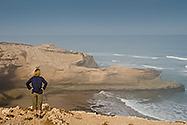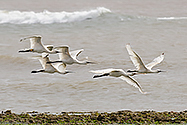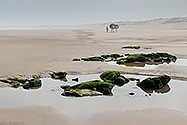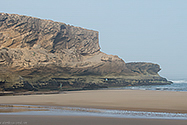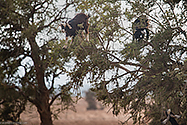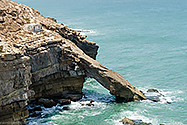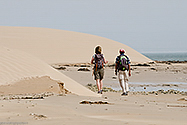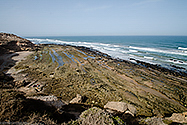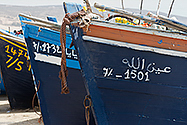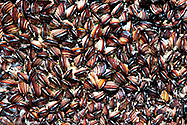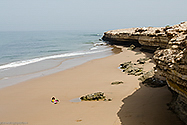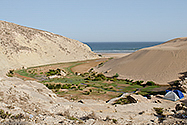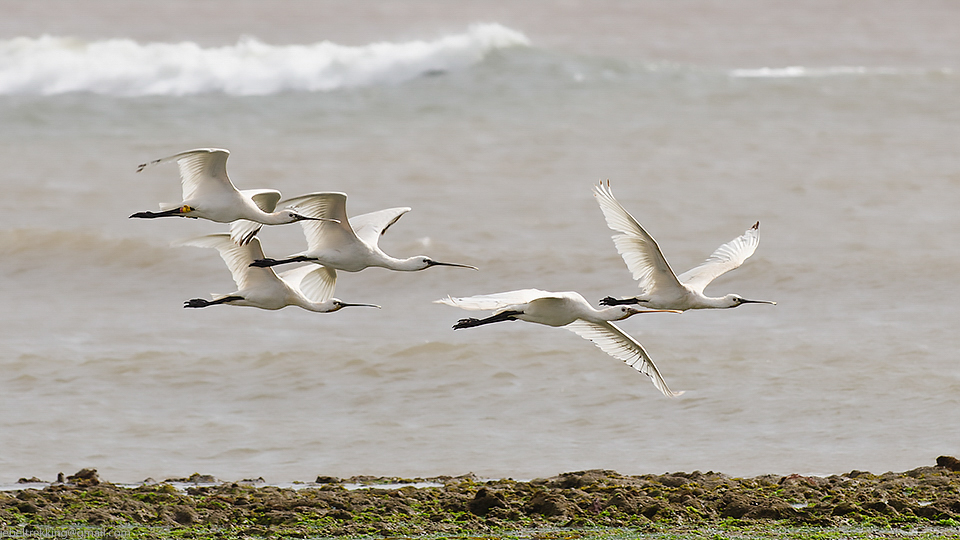
Endless beaches and dramatic cliffs along the Atlantic coast
Enjoy walking for miles and miles along the Atlantic coast, on spectacular beaches that we have almost completely to ourselves. This trek in a windswept landscape, where the sea meets the sky, takes us up over cliffs dropping abruptly into the sea, past secluded little inlets and over billowing sand dunes.
THE TOUR DAY BY DAY
This trekking tour is described from north to south. If you prefer having the sun behind you, the tour can just as well be done in the opposite direction.
Day one: Marrakech – Timsgida Ouftess – Sidi Kaoki (approx. 4 trekking hours)
The drive from Marrakech to Timsgida Ouftess, just south of Essaouira and close to the Atlantic Ocean, takes 2,5 to 3 hours. Here we meet up with our dromedary drivers who will load up the dromedaries for us. We set out heading for the shore and we soon pass the old sultan’s palace, half buried in the sand, near Diabat.
Shortly after, we reach the broad sweeping beach, extending for miles and miles and almost empty of people. Large tufts of grass grow where the beach turns into rippling sand dunes stretching in towards land. At the water’s edge we might see white long-legged spoonbills looking for food. We spot seaweed, shells and jellyfish, and make interesting finds among things that have been cast ashore by the sea.
We walk up over a hill from where there is a nice outlook towards tonight´s camping site. The last stretch of today´s trek goes along the edge of the beach, below sand coloured cliffs. The local people come here at low tide to look for clams and small fish. Colourfully painted fishing boats lie drawn up on the beach. We pitch our camp in a small group of trees at the outskirts of the small village of Sidi Kaoki.
Day two: Sidi Kaoki – Sidi M’bark (6 to 7 trekking hours)
We leave the little village and start off along the deserted beach that extends as far as the eye can see. At low tide, the water and wind create fascinating patterns and deltas in the sand. The shapes are erased again when the tide comes in a few hours later.
We walk over steep sandstone cliffs rising out of the sea and breaking off the long beach. From up on the cliffs we see the turbulent ocean below us. Perhaps some local fishermen are standing with their rods on the cliffs where the breakers crash against the rocks.
Gulls and black cormorants fly along the beach as we walk in the edge of the water in the direction of our camping spot in Sidi M’bark, a collection of houses in a lush green valley with a little beach. In the afternoon we have time to enjoy a dip in the ocean and we can browse through beautiful shells and mussels in many different shapes and colours.
Day three: Sidi M’bark – Iften (4 to 5 trekking hours)
Today we will set out uphill and walk on gravel paths over wind-blown heaths by the beach. We might come across a herder with his flock of grazing goats and sheep or a fisherman on his way home with his catch. Far-reaching vistas over a barren and windswept landscape alternate with small inlets and striking cliffs.
We pass a little fishing village and arrive in an area with billowing sand dunes in beautiful patterns formed by the wind. A small number of houses break up the solitary landscape. Just beyond, in Iften, on the edge of the beach and next to the sand dunes, we pitch our camp for the night. In the afternoon we have time for a swim in the ocean, and a refreshing shower in a small waterfall just beyond the beach.
From our campsite we watch the afternoon sun tint the sand dunes in golden hues before it drops slowly into the sea. We delight in the tranquility of the place and fall asleep to the sound of the ocean’s waves with the endless starry sky arching above.
Day four: Iften – Tafedna (5 to 6 trekking hours)
With the sundrenched sand dunes behind us we walk towards the magnificent cliff formations at the end of the beach. A pathway takes us up the mountain and we wander on in increasingly wild countryside. Rugged, steep cliffs drop abruptly into the ocean and in places they have been hollowed out by the waves into peculiar arches. Beneath we spot little secluded inlets with untouched beaches.
Further along we are met by an extraordinary and dramatic ocean floor that appears at ebb tide. The algae-covered stones and the cliffs create patterns leading thoughts to a volcano landscape with petrified lava streams. In pools of water we find sea urchins, tiny fish and spotted salamanders.
Today´s walk takes us higher up than before, even if the trek´s highest point is only about 60 meters. We get up to a plateau where Argan trees grow with their crowns and trunks shaped by the ocean´s winds. The Argan tree is in danger of extinction and it grows in the wild only in south-western Morocco. The exclusive Argan oil, which comes from the fruit of this tree, is used to heal skin diseases, in beauty products and in cooking.
Late in the afternoon we arrive in the holiday village of Tafedna, with its rows of white-painted houses with their blue window shutters. We camp overlooking the inviting beach, just outside the village. Perhaps we will take a short ride on a dromedary in the sunset.
Day five: Tafedna – Timsgida Ouftess – Marrakech (4 trekking hours)
On our last trekking day, we leave the ocean behind and turn inland towards the finishing point of our trek. We walk through traditional villages and we might have Moroccan mint tea in a family along the way. By the Argan trees, close to the village of Timsgida Ouftess, our car will be waiting for our return trip to Marrakech. The drive back takes 3,5 to 4 hours.

